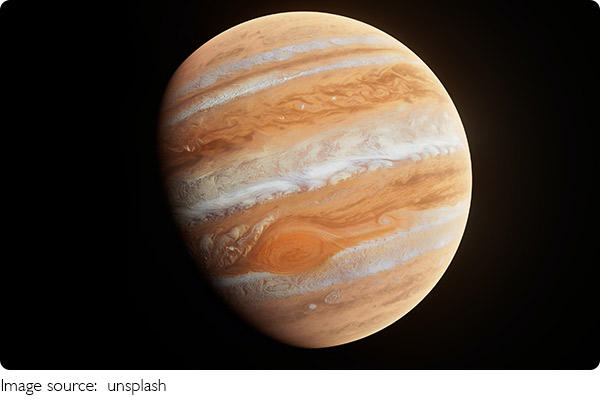Red Spot Fade

Lykkers, have you ever stared at Jupiter through a telescope and noticed a giant red swirl dominating its southern hemisphere? That’s the Great Red Spot, a storm so massive it could swallow Earth whole and still have room to spare.
For more than 350 years, this raging storm has persisted on the largest planet in our solar system, but recent observations show that it’s shrinking at an astonishing rate. Today, we’re diving into the life story of this cosmic giant.
Jupiter: The Solar System Giant
Jupiter is a planet like no other. Its volume is 1,300 times that of Earth, and its mass is 318 times greater. If Earth were placed on a cosmic scale alongside Jupiter, it would seem almost insignificant. But size alone doesn’t capture Jupiter’s awe-inspiring nature. Its surface is a canvas of swirling clouds and storms, and nowhere is this more striking than the Great Red Spot.
This iconic feature is a gigantic, red anticyclone that has fascinated astronomers and sky watchers alike. Measuring roughly 13,000 kilometers across, it dwarfs our planet and makes Earth look tiny in comparison.
A Storm That Defies Time
On Earth, even the strongest hurricanes rarely last more than a week. The Great Red Spot, however, has held its ground for centuries. First recorded in 1665 with early telescopes, it has been continuously observed, and researchers can trace its history by comparing its size, color, and location across hundreds of years. While it has remained a constant, the storm is not immune to change.
Observations from the Hubble Space Telescope show that its east-west diameter has shrunk from roughly 16,000 kilometers in 2014 to about 13,000 kilometers today—a decrease of roughly 30%. At the same time, peak wind speeds have dropped from 1,548 km/h to around 1,368 km/h.

The Slow Aging of a Cosmic Beast
This shrinkage is not sudden—it’s a slow but steady aging process. Back in the 19th century, the Great Red Spot spanned nearly 40,000 kilometers, about a third of Earth’s circumference. Now, it’s just over 13,000 kilometers across. Over the decades, the rate of shrinkage has accelerated. But why is this “storm king” shrinking? The answer lies in Jupiter’s complex atmospheric system.
The storm survives because it draws energy continuously from surrounding high-speed jets in the planet’s atmosphere. Think of it as a massive engine fueled by swirling currents.
Energy Flow and Decline
These atmospheric jets circle Jupiter like cosmic highways, some clockwise, some counterclockwise. Their interactions sustain the Red Spot’s power. However, these “energy highways” are not permanent. Over time, some currents slow, shift, or fade, reducing the energy reaching the storm. The Great Red Spot begins to “starve,” its edges collapsing and distorting.
Meanwhile, smaller storms constantly orbit nearby, sometimes merging with the Red Spot. These interactions can momentarily boost it, but more often, they disrupt its structure and drain energy, accelerating its decline.
Watching a Cosmic Wonder Fade
Data from Hubble and the Juno spacecraft show the Red Spot narrowing by about 230 kilometers per year. If this trend continues, scientists predict it could vanish entirely within a century or two. Even though it may linger for decades, its decline carries huge scientific value. The Great Red Spot is not just a massive storm—it’s a natural laboratory for studying gas giant atmospheres.
Jupiter has no solid surface, and its atmosphere is incredibly deep and dynamic. Observing the storm’s life cycle helps us understand atmospheric behavior on Jupiter, Saturn, and even exoplanets.
Why It Matters
The Red Spot’s fading reminds us that the universe is never static. Nothing lasts forever, not even cosmic spectacles. Its decline is a vivid example of atmospheric evolution, energy transfer, and planetary dynamics. By studying this change, we gain insight into how gas giants sustain storms for centuries and how similar processes might unfold on other planets. For Lykkers, this is a front-row seat to the universe’s ongoing story—a chance to witness a rare cosmic transition.
Look Closely!
So, Lykkers, whenever you see Jupiter’s huge red eye, remember it’s more than a simple storm. It’s a living, shifting system that shows us how energy moves, how time shapes planets, and how even massive cosmic features change. The Great Red Spot may not last forever, but its story helps us understand the universe in ways nothing else can. Let’s keep watching the skies—there’s always something new to discover!
Urgent Update: Jupiter’s Great Red Spot Is Shrinking AND Squeezing
Video by NASA Space News

 · Science team
· Science team